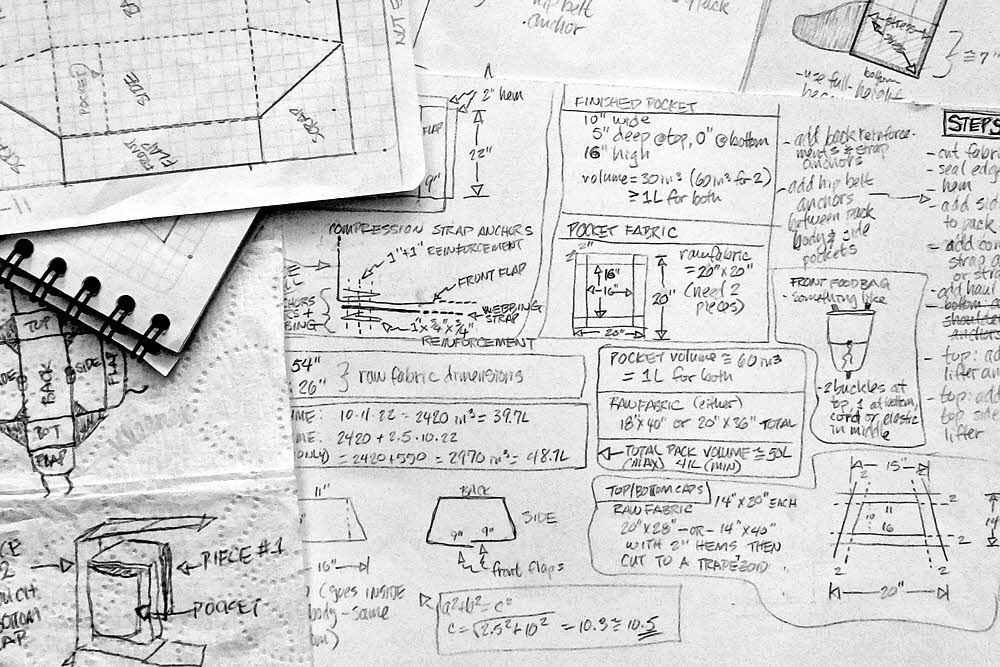
Scheming and scribbling.
ReSqueeze Resurrection.
Two things I decided when I started going light — I'd always wear boots, and if I ever did make any of my own equipment, I'd never muck with packs, ever.
Boots: Last worn backpacking on Labor Day Weekend, 2000.
Packs: I made a Squeezo. Several Squeezos. In fact, I invented the Squeezo. Plus I did a bunch of doofus packs leading up to the Squeezo. (See link to previous post at the bottom.)
The last Squeezo I put together was in 2005 or so, and I intended it to be a last prototype before freezing the design and making a final, perfect pack. But Squeezo 2005 was so good that I just used it until moving out of the country in late 2012. I couldn't take everything so I ditched the pack and, since I was never going backpacking again, threw out my patterns, such as I had. (The shoulder strap and hip belt patterns were critical, as were several key measurements — all long gone. Picture me raging now.)
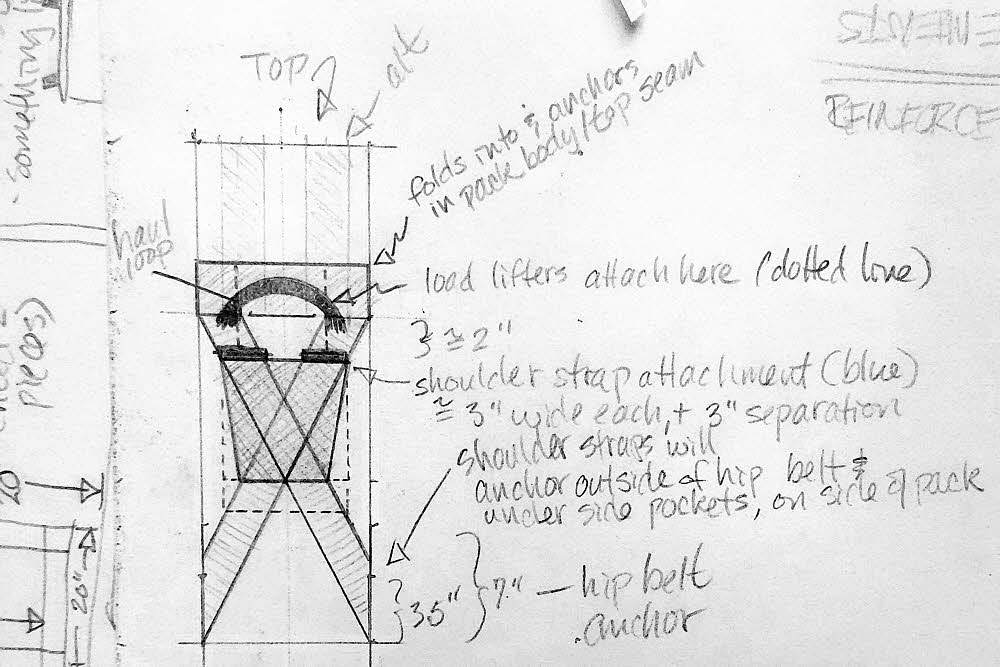
Continued scheming and scribbling.
Too bad you do that, you, now you know what dumb is. Yep. Me the dumb one. (The voice of reason is always right.)
See, it started with hammocks. The place I worked, there was a contractor crew on board, and one of them found out about Hennessey Hammocks and got me all eager, and I bought one. Fine.
Mark, if I remember. That's all I remember. It was a long time ago.
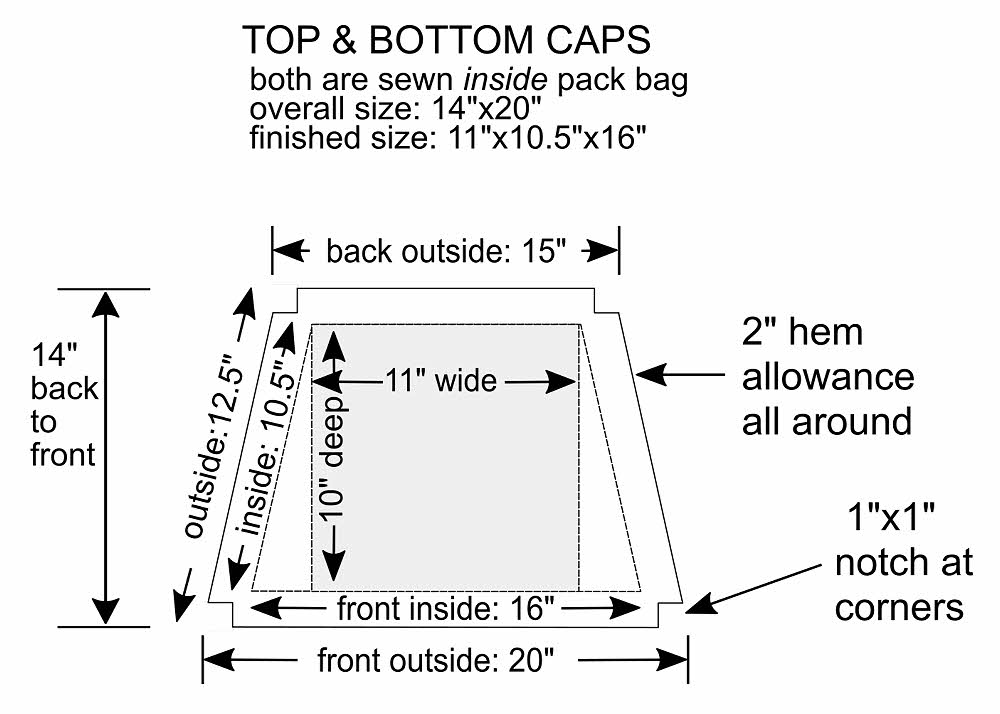
Some details begin to come into focus.
Then Mark found out about Gearskin packs and got me all eager in those parts, and I bought one of them. Fine, too.
The Gearskin is a brilliant idea, just not finished. It was invented somewhere in the late 1990s, developed to the point that it was workable, and abandoned at the halfway point. It turned out to be especially awkward for someone using a hammock. I like to camp on slopes along the trail. Some of these slopes have been as steep as ye olde 45°, and that's steep. Difficult to even stand on, but near the trail, clean and unused, often with no underbrush, with a clear view all around, and quiet. And the trees on slopes often turn out to be big enough to hang from and also small enough to hang from. None of these six-foot-thick giants of the lowlands.
Yeah, right. But come morning, there's a problem if you're carrying a Gearskin: You can't hardly pack it.
See, the way you load a Gearskin is you lay it flat (go find some photos). This is cool on level ground but not on a slope.
You open the pack, which is one piece of fabric, lay it all flat, and arrange your things on top of that. Then you leave the back on the ground and fold the front up over it like folding a taco. Then you cinch down the side and top straps.
That doesn't work on a slope. All your stuff rolls away, and what can't roll slides away. To load a Gearskin on a slope requires a minimum of three arms, which means getting an implant or bringing along a manservant. Neither worked for me, so after sewing a few dickhead-stupid shelters I thought I was capable of making a pack that would work better.
Eventually I was.
The problem with the Gearskin was that it had no inside. Under the right circumstances it was trivial to arrange all my goods just so before cinching down the pack, but I didn't camp where those circumstances applied. The real beauty of the pack, though, was that it used compression to achieve rigidity, and so it didn't need a frame. I think that my Gearskin weighed 19 ounces (540 g).
I had started ultralightering with a GVPGear G4, another frameless pack, but I moved to the Gearskin because by tightening its compression I could firm it up enough to be actually usable. The G4 was a good introduction to light packs but not practical (which was part of the introduction). By carrying a hammock with an underquilt, I had nothing remotely resembling something rigid, so, unlike those ground-sleepers with closed-cell mattresses, I dint have nothin to use as a fake frame. Anyway, top-loading packs, if I may say so, suck bigtime. They're nearly impossible to load properly, and the more soft stuff you have the worse it gets.
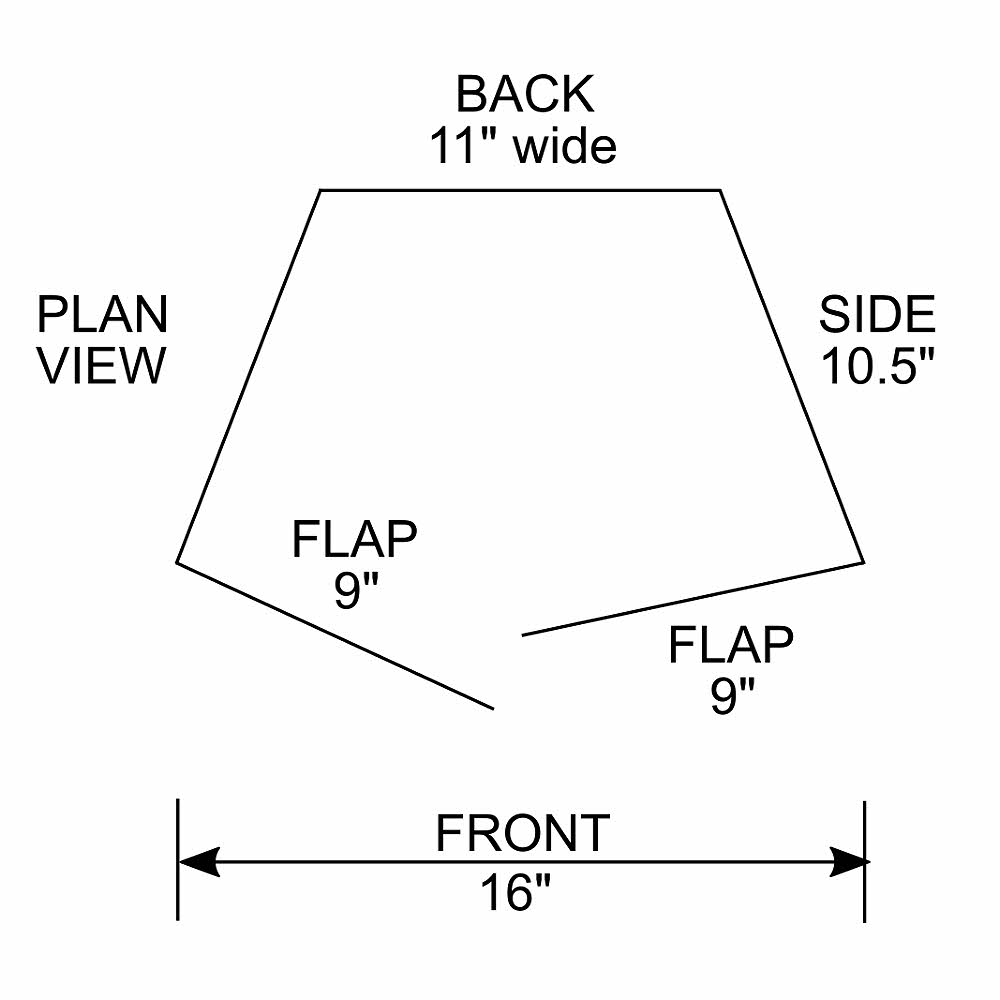
Abstract view from above. Overlapping flappers on front. Expandable from square to trapezoidal.
I eventually developed the idea of making an enclosed pack body that loaded from the front. Among packs we have top-loaders, which everyone is familiar with, panel-loaders, which are seldom available, even the bad ones, the Gearskin, and my design. I call it a slit-loader. It's a font-loading pack with no panel. My first designs were both slit and top loaders, but I found that eliminating the big hole up on top firmed up the whole pack and didn't affect utility at all. Part of these results are due to the two huge side pockets that I build in. Add a small detachable pocket that attaches to the pack's front to carry the cookset and the day's food, and there is usually no reason to get into the pack body during the day anyway.
It worked. Best pack I've ever used. Weighed 20 ounces plain, or 22 ounces after I added a couple wooden dowels to act as vertical stiffeners (567 g and 624 g, respectively). I made a couple of two-week, 200-mile, no-resupply trips with it. That hurt, but the pack worked. When you're starting out carrying close to 30 pounds (13.5 kg) in food alone, the whole trip revolves around pain and muscle fatigue, and that's unavoidable, but the important part of the story is that the pack worked. It expanded to accept a bigger-than-normal load, and then carried it, uncomplaining.
Since the mostly-closed design meant that I could load the pack on any slope, I could place my equipment exactly where it needed to go, and keep it arranged perfectly until I was ready to compress it all. Things went in in layers through the front slit: sleeping bag first, flat and wide against the pack's back, providing cushioning, then the food bag, placed vertically, then the hammock/tarp/underquilt in an inverted-U shape around the pack's inside perimeter. Put the possibles bag up top, stuff clothing and rain wear in the empty spaces, and you just about have it. Then begin cinching down the straps until the whole pack becomes one solid wad, and go. Beauty, eh?
I miss it.
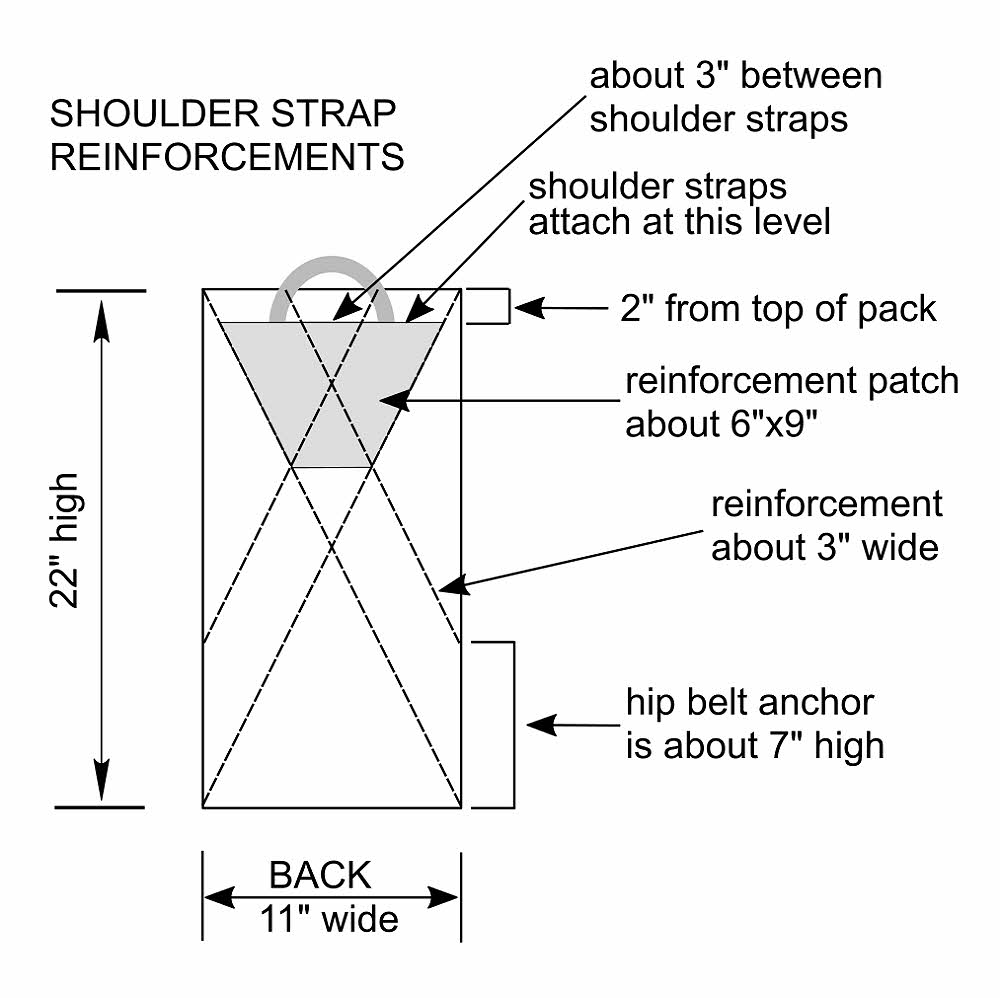
The shoulder strap reinforcements help to pull the pack together.
So I'm trying to resurrect Squeezo by remembering the design. That's easy. The hard part is that I need to have exact dimensions. They have to be reinvented, and my circumstances mean that I have only one chance. I have the fabric and hardware with me, but only enough for one try. The fabric isn't anything fancy, just utility nylon from Jo-Ann fabrics, but where do you find that or anything similar in Ecuador? Closed-cell foam padding? Buckles? Nylon webbing? I don't think so.
I bought a sewing machine for $180. It's probably a $100 model in the U.S., but I have it. I'll sell it for half price when I'm done, which will be soon, because I have an airline ticket waiting to be used. When the time comes I'll either have a pack to fly home with, or not.
I don't know what the problem is, but all the packs I've used since my last Squeezo have hurt a lot, in the shoulders. REI Flash 45, Golite Jam, Granite Gear Crown 60, Mountain Laurel Designs Prophet. I don't know if it's the sharp curve in my collar bone that's unique to me, or the narrowness and stiffness of the commercially-made shoulder straps, but it's been what? Five cases of extreme bone pain? Yes, five — screaming, relentless, all-day, endless collar-bone pain. I had to stuff extra padding between the straps and my bones, which remedied but didn't cure the situation.
I think my former Squeezo straps were wider. I based them on the Gearskin that I had. I don't remember how wide they were, and now I have to guess. At least I have the MLD Prophet to trace from, for strap shape and length. The width and padding details I can adjust when I make the straps, but it will have to be a guess, and I do have only that one chance to get it right. I have both stiff foam and soft foam, so I can use layers. I'm hoping.
What else? I don't remember. Am I making sense? Who can say?
But I'm going to try.
Postscript.
I have more images of a pack I built in 2015 from a "replacement" hip belt and shoulder straps I bought via REI, and stuff sacks I bought at Swain's General Store in Port Angeles, WA. I may post them at some time.
I will post instructions if I get this current pack worked out.
2009 Post.
No Pack Is Made For Me. Has photos of my dear departed Squeezo (insert tears here).